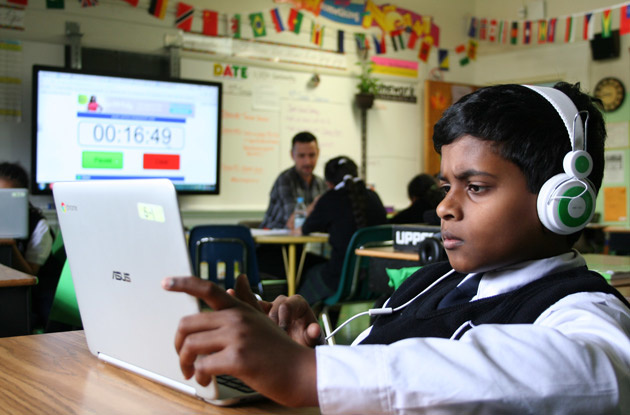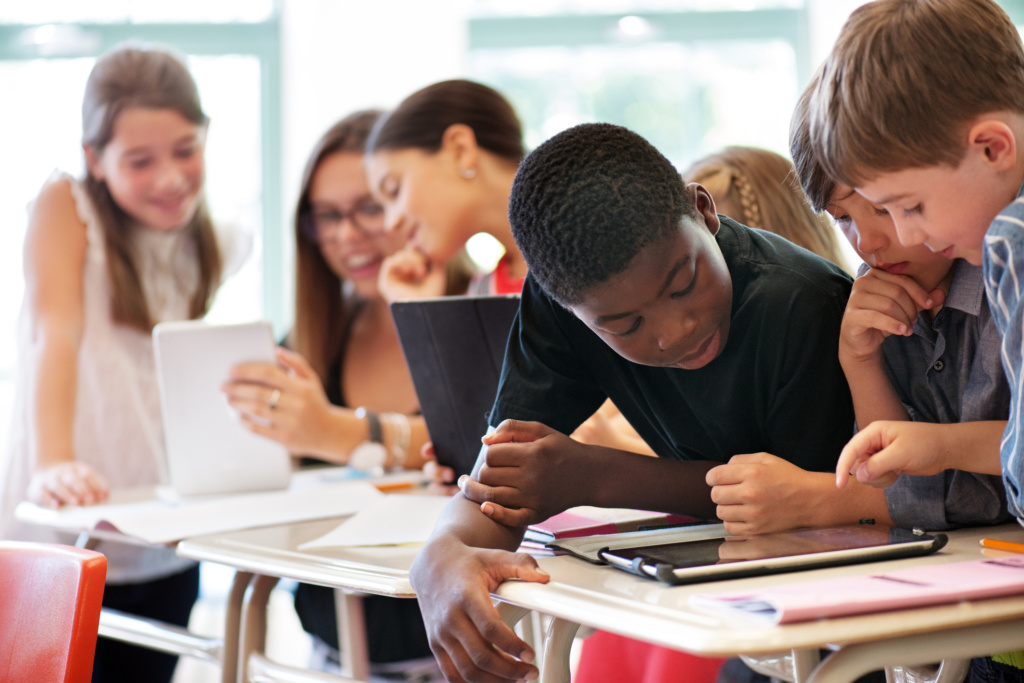
Gamification or ‘game-based learning’ put simply, means using elements of play to help children learn. This can include point-scoring, competing against other pupils, rules and rewards for success. While hardly a new concept, the constant evolution of the online world means that game-based learning is taking on new and increasingly innovative approaches to help engage pupils in learning.
In many cases, online, game-based resources are used to engage often reluctant learners with topics or subjects they may struggle to learn through more traditional teaching techniques. In this article, we look at how employing gamification with SEND students helped to motivate children and increase their confidence in Maths, a subject which many had previously considered a subject they ‘just couldn’t do’…
Shaping Exceptional Futures
Bebington High School is a specialist sports college based in Wirral in North West England. The school’s vision is to ‘shape exceptional futures’, which it achieves through the values represented in sport: leadership, perseverance, fair play, teamwork and loyalty. The school encourages all within its community, including parents, to gain leadership and coaching awards, opening up further opportunities for students, and it prides itself on its position in the community.
Motivating for Maths Excellence
As Assistant SENCO and Head of Resourced-Base Provision at Bebington High, I was keen to find a solution that would help engage students with moderate learning difficulties to be more motivated in their maths learning.
We already had an additional literacy programme in place to work alongside the English curriculum and we wanted to replicate its success with our maths programme.
One of the main challenges we face with our students is a lack of confidence in their maths abilities. Many of them become trapped in the fixed mindset of not being able to ‘do maths’, often due to not having mastered the fundamental concepts earlier in their school careers. This leads to a subsequent lack of motivation and difficulty engaging them in trying to improve.
Another challenge was in finding a solution which would allow us to set work at an emergent level, but with an interface which didn’t immediately alert students to the fact they were working at a lower level—and risk knocking their confidence further. We also wanted the solution to be learner-led so students could take charge of their own development.

Meeting the Challenges
We began using Mathletics, an online game-based resource, in June 2018 to reinforce knowledge from maths lessons, ensuring that key concepts were deeply embedded and students had adequate opportunities to practise the methods they’d been taught during class. Using a game-based resource allows us to repeat activities and view results in real-time, which is hugely useful for engaging reluctant learners.
Mathletics is a curriculum-mapped, adaptive learning solution for KS1–3. Computer algorithms within the software orchestrate the interaction with the learner and deliver customised resources to meet the needs of each child. This enables them to progress at their own pace and take ownership of their learning. Pupils can also visually track their progress—a function that empowers users to feel confident and motivated to think critically, make choices, seek help when required and reflect on their own learning.
From a teaching point of view, having an online resource which is fully learner-led allows us to start some students on the online resource while delivering further teaching or one-on-one guidance to students still struggling with basic concepts. The software is highly personalised, which helps us to deliver differentiated learning to all our students with the handy placement quiz ensuring they start at the correct level.
As the resource is reward-based, we really find all our students from year 7–11 enjoy using it. Not only are they motivated when using the software, but they work hard to get their set work done so that they can choose to go on Live Mathletics, the 60-second mental maths game.
Strengthening Concepts and Confidence
Since introducing the individualised, game-based learning, we have seen a huge improvement in students’ maths, particularly with the strengthening of mental methods.
It has also helped increase students’ motivation to learn. Even those who are more difficult to engage enjoy the IT-based sessions where they’re able to learn through playing on an engaging interface.
Personally, I have noticed an increased confidence in Maths lessons as I deliver these across the year groups in our department. As Mathletics is highly personalised, it enables me to set work appropriate to their ability, without alerting them to the fact they’re working at a level below the national standard. This allows them to improve their understanding of basic concepts and set off on the correct path to more advanced mathematics.
From a teaching point-of-view, the resource allows me to set work and view students’ progress to see if they understand the concept fully when working independently. Topics are clearly broken down, making it quick and easy to set work and saving valuable time on planning and marking.
What’s next?
One of the areas we’re keen to develop is to increase parents’ engagement with their children’s learning. A further advantage is that it is online, so can be used at home as well as at school. We would therefore like to use it more consistently for homework, which would have the dual benefit of saving us time on marking!
A step that we’ve already made is to purchase additional licenses for our mainstream classes. We’ve already started talks with the Maths department about using the resource as an intervention tool.
We are excited to continue using game-based learning to raise standards at Bebington High!
The benefits of game-based learning:
- 1. Supports less-confident learners
For many less confident learners, traditional classroom practices can often fail to engage children in advancing their learning. In subjects sometimes perceived as ‘scarier’, such as Maths, it’s not uncommon to encounter pupils who simply shut down when faced with a tricky question they aren’t immediately able to answer. Often this doesn’t mean that a child isn’t capable of discovering the answer, merely that a fear of Maths is preventing them from attempting to solve the problem.
Game-based learning offers a non-threatening and supportive environment where students can explore their skills, without feeling like they are failing—helping students to feel secure in their ability and motivated to improve.
- 2. Encourages mastery
Getting students to use games-based learning can be a useful way of prompting them to revisit concepts until they improve and have really understood the methods. Achieving mastery is the key to being able to answer any question thrown at students in an exam.
Surveys have found that learners generally recall just 10 per cent of what they read and 20 per cent of what they hear. If there are visuals accompanying an oral presentation, the number rises to 30 per cent, and if they observe someone carrying out an action while explaining it, 50 per cent. But learners remember 90 per cent ‘if they do the job themselves’, even if only as a simulation.
Learners’ favourite gamification techniques include the ability to progress to different levels, receiving scores and playing through an avatar—all often found in high-quality digital education resources.
- 3. Allows autonomy
The vast majority of game-based resources are learner-led, meaning that students must progress in order to complete a task. All teachers are familiar with the benefits of a learner-led approach rather than teacher-based practice. Students who may not consider themselves ‘good at school’ have the chance to see that progression is something everyone can achieve—not just the perceived high-flyers. Similarly, student-led learning provides greater opportunity for students to make mistakes and try again, seeing that one-time failure doesn’t brand them as a failure for life.
Empowering students through independent learning will have a huge impact on their skills and ultimately give them more confidence when it comes to tackling exams. Unlike exams, games give constant feedback and keep the stakes low.
- 4. Reinforces classroom practise
The majority of online resources are accessible from home as well as school and can be accessed on multiple different devices. This not only saves time for teachers in setting and marking homework, but also provides a more seamless integration between work completed at home and at school. If a child is struggling with a particular concept and there isn’t time to address this fully in class, homework can be set to encourage a student to practise this skill at home. A good online tool will allow a teacher to view progress and if a student is still struggling, this can be picked up on back in school.
- 5. Builds on children’s existing hobbies

Let’s not forget that students are playing games when they are out of school. 57 per cent of the UK’s population are ‘gamers’ in their spare time, with the largest single age/demographic being 15–24-year-old males making up 16 per cent of all players.
So if students are voluntarily investing countless hours in developing gaming skills outside of school, it has to be sensible to show them how the experience they gain through extended practice and strategies such as ‘risk-taking’, reasoning and problem-solving can be harnessed and used successfully in the classroom too.
By playing an educational ‘game’, students spend more time actively learning and reinforcing their knowledge, which can provide for a proper flipped learning experience. By incentivising this effort we support that human desire to self-improve—and just as importantly allow students to demonstrate that improvement to themselves and others.
Christine Edge-Sayer is Assistant SENCO and Head of Resourced Base Provision at Bebington High.
Register for free
No Credit Card required
- Register for free
- Free TeachingTimes Report every month